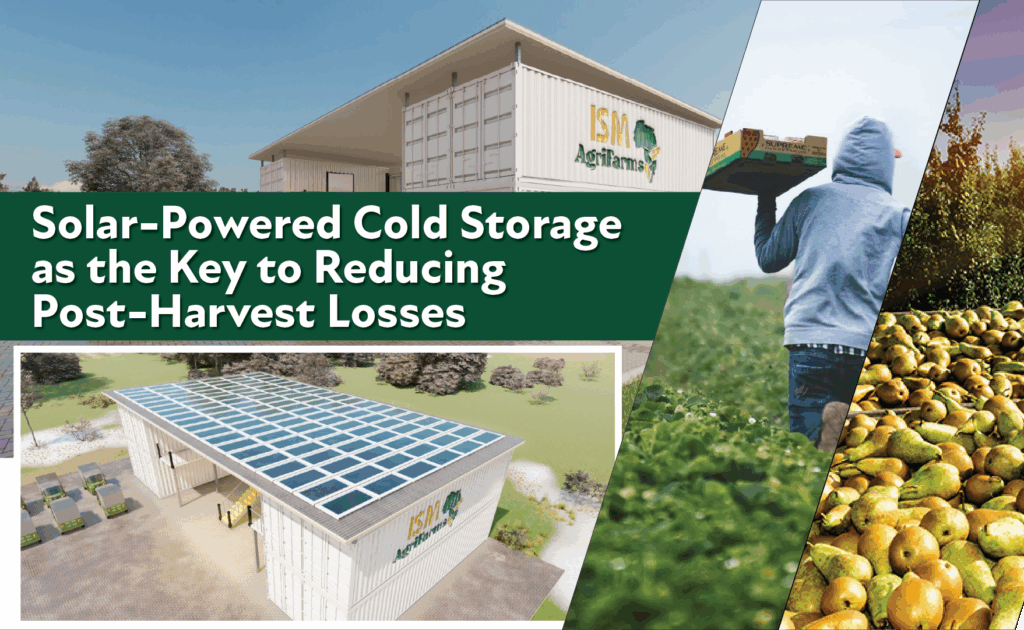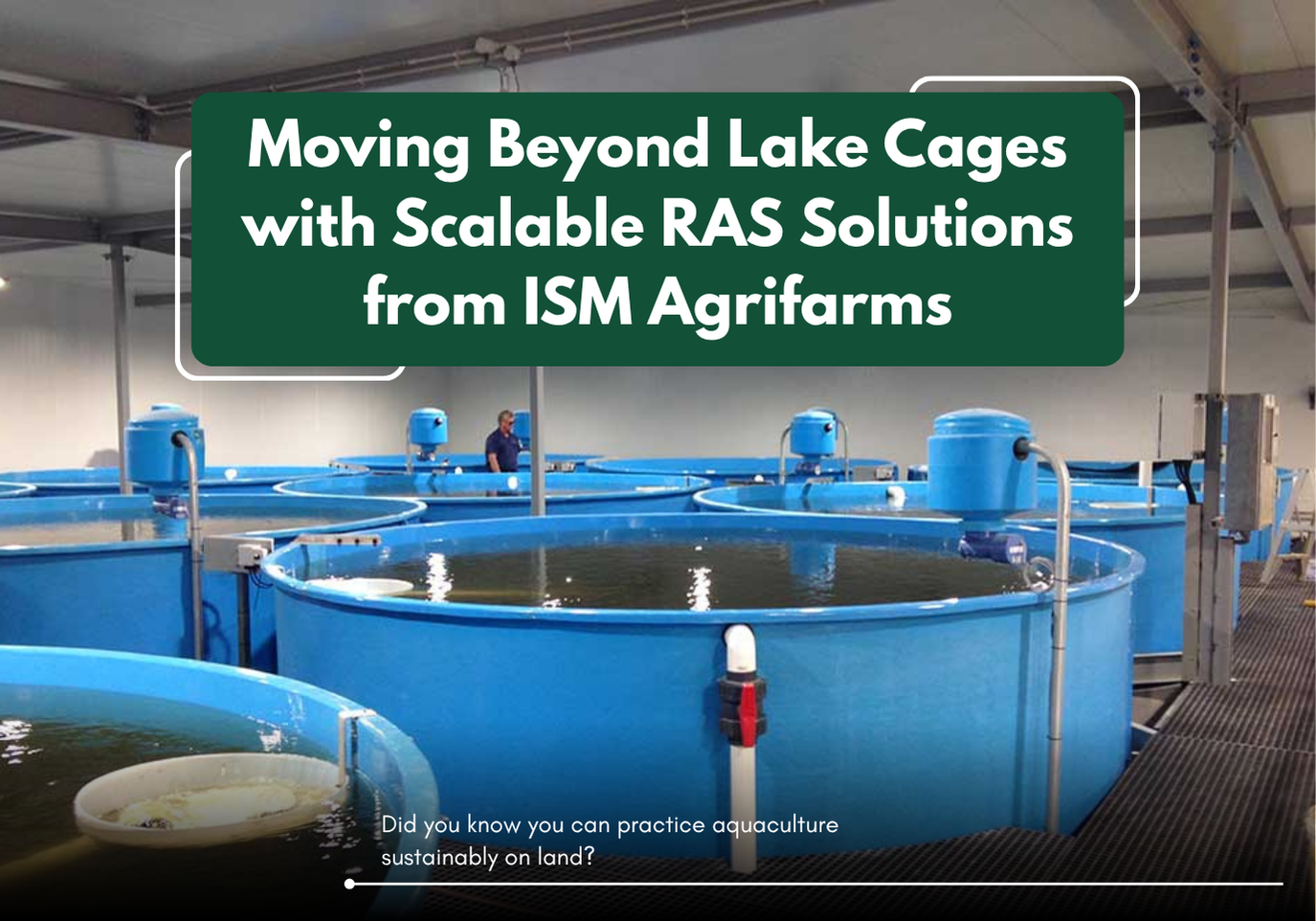In East Africa, agriculture is the backbone of the economy, yet post-harvest losses remain a significant challenge. In Kenya alone, the horticulture sector experiences losses of up to 60%, primarily due to inadequate storage and handling practices. These losses not only affect food security but also result in substantial economic setbacks for smallholder farmers.
One of the primary contributors to these losses is the lack of reliable cold storage facilities. Perishable crops like mangoes, tomatoes, and avocados are particularly vulnerable, with studies indicating that up to 64% of mangoes go to waste due to poor post-harvest handling. This not only diminishes farmers’ incomes but also exacerbates food insecurity in the region.
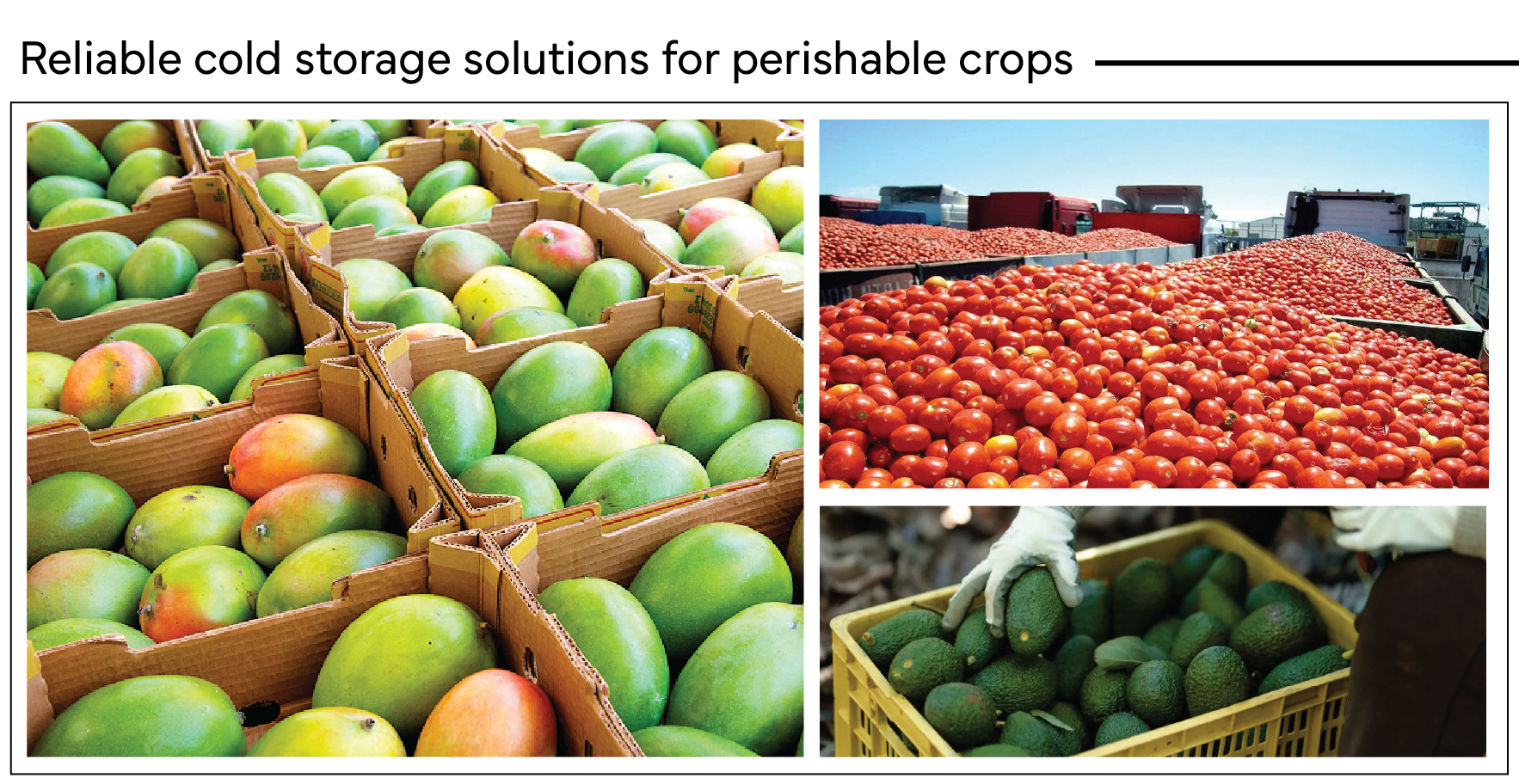
Enter solar-powered cold storage solutions – a game-changer for East African agriculture. Companies like ISM: Agrifarm have pioneered mobile, solar-powered cold storage units that can be deployed directly in the field. These units operate on a cooling-as-a-service model, allowing farmers to rent storage space affordably. By maintaining optimal temperatures, these facilities extend the shelf life of produce by up to 21 days, enabling farmers to access better markets and prices.
The economic benefits are substantial. Access to solar-powered cold storage can lead to revenue increases of over 400% and price improvements exceeding 100% in certain cases. For instance, Agnes Wangari, a smallholder farmer in Central Kenya, reported a significant income boost after utilising solar powered cold storage units.
Beyond individual success stories, the broader impact on food security and economic development is profound. Reducing post-harvest losses not only ensures more food reaches the market but also stabilises prices and reduces the need for imports. Moreover, by utilising renewable energy, these cold storage solutions contribute to environmental sustainability and reduce reliance on fossil fuels.
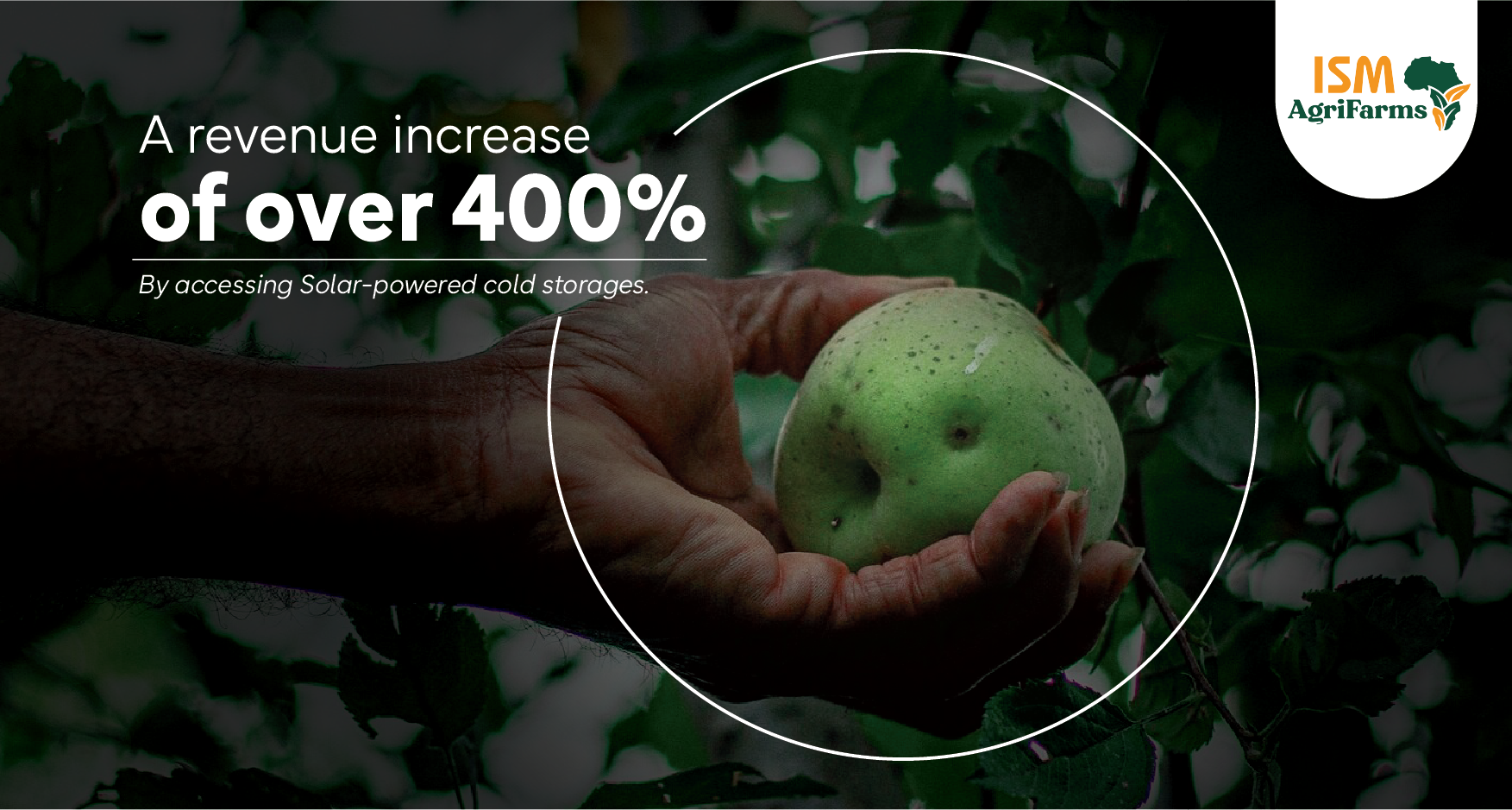
Investing in solar-powered cold storage infrastructure presents a compelling opportunity for stakeholders across the agricultural value chain. For investors, it offers a chance to support scalable, sustainable solutions with tangible returns. For farm owners, it provides a practical means to enhance productivity, reduce losses, and improve livelihoods.
In conclusion, addressing post-harvest losses through innovative, clean energy solutions like solar-powered cold storage is not just an agricultural imperative but a socio-economic necessity. By embracing these technologies, East Africa can take a significant step toward achieving food security, economic resilience, and sustainable development.
Several crops in Kenya would significantly benefit from post-harvest chilling (cold storage) to reduce spoilage, extend shelf life, and maintain quality, leading to better market prices and reduced losses. See below for more details:
- Avocados (Top Priority for Chilling)

- Bananas

- Potatoes
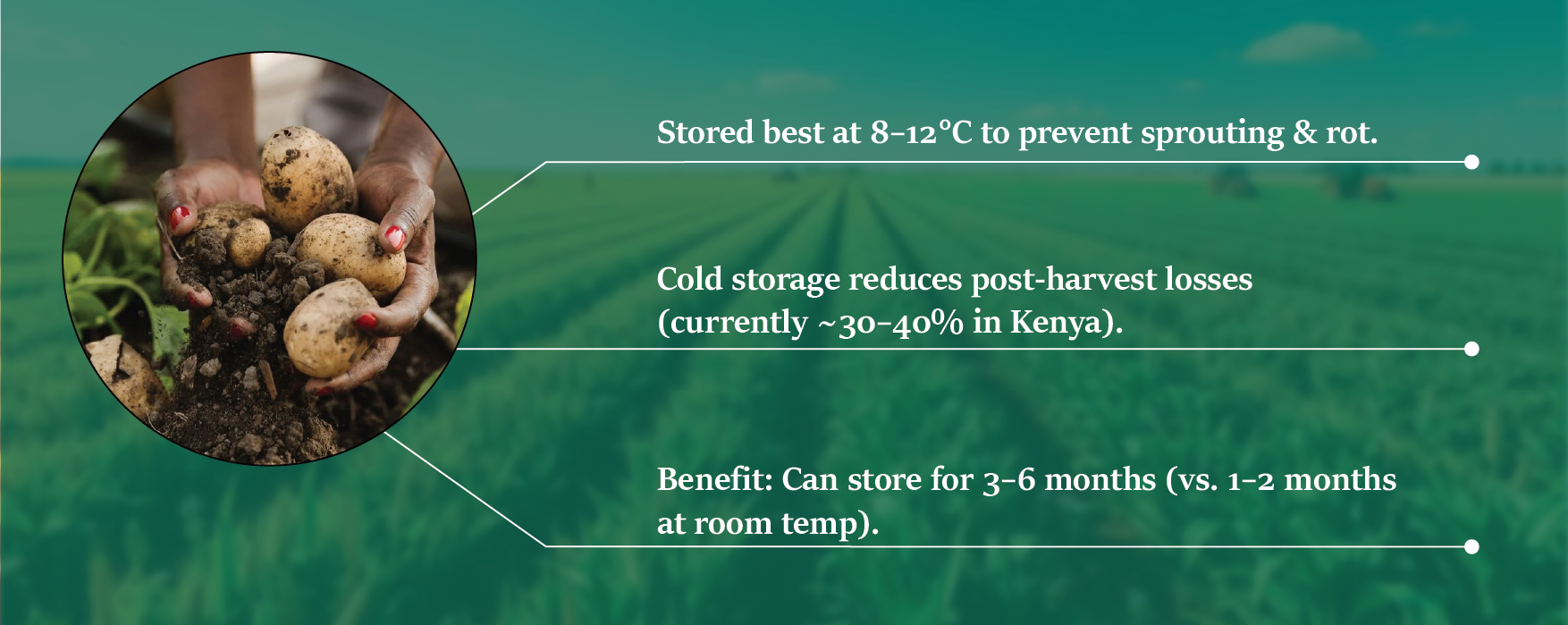
- French Beans & Horticultural Exports

- Coffee (Parchment/Wet-Processed)

- Cut Flowers (Roses, Carnations)
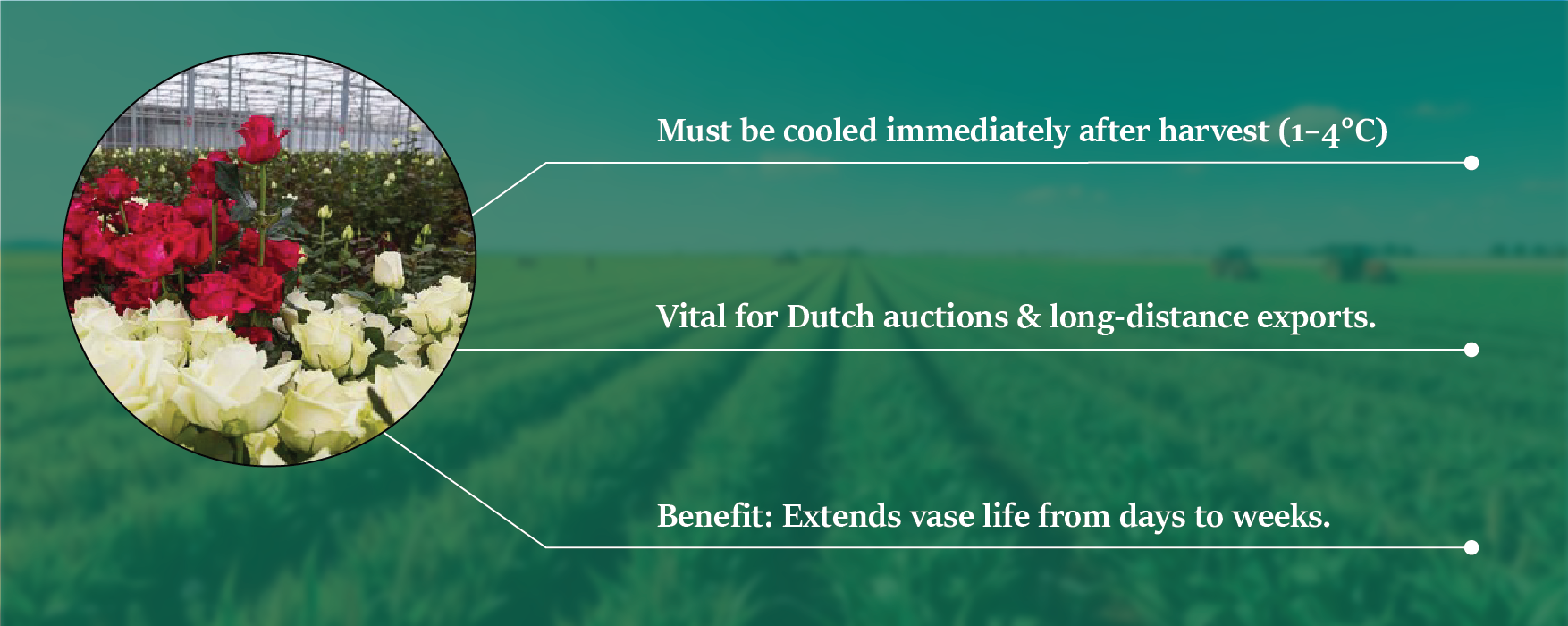
Key Takeaway
– Best ROI for chilling: Avocados, French beans, potatoes, bananas, coffee (wet), flowers.
– Kenya’s challenge: Lack of affordable cold storage (only ~30% of farmers have access).
– Solution: Mobile cold units, solar-powered cold rooms, and cooperative storage.
More Details of Specific Crop Benefits of Post-Harvest Cold Storage
Cold storage significantly reduces post-harvest losses, improves shelf life, maintains quality, and increases profits for farmers and exporters.
- Key Benefits of Cold Storage
- Extends Shelf Life (Reduces Spoilage)
– Without cold storage: Many perishable crops lose **30–50%** of their value within days due to heat, mould, and over-ripening.
– With cold storage: Shelf life improves dramatically:
– Avocados: 3–7 days → 3–4 weeks (at 5–7°C)
– Bananas: 1 week → 3–4 weeks (at 13–15°C)
– Potatoes: 1–2 months → 3–6 months (at 8–12°C)
– French beans/peas: 2–3 days → 2–3 weeks (at 4°C)
- Maintains Quality (Color, Texture, Taste)
– Slows down respiration & enzymatic decay, preserving freshness.
– Reduces wilting, browning, and microbial growth.
– Critical for export markets (EU, Middle East, China) where appearance matters.
- Reduces Post-Harvest Losses
– Kenya loses ~40% of fruits & vegetables due to poor storage (FAO).
– Cold storage can cut losses by 50–80%, increasing salable yield.
- Stabilises Market Prices
– Farmers can store produce and sell when prices are high (avoiding gluts).
– Example: Avocado prices fluctuate from Ksh 10 to Ksh 100 per piece —cold storage helps farmers wait for peak demand.
- Enables Export Opportunities
– EU & Middle East markets require pre-cooling for fresh produce.
– Flowers, avocados, and French beans must be chilled immediately to meet standards.
- How Much Does Cold Storage Improve Yields?
While cold storage doesn’t increase field yields, it maximises the usable harvest:
Crop Loss Loss Net Gain
(Without Cooling) (with Cooling)
Avocados 40–50% 10–15% +35%
Bananas 30–40% 10–20% +25%
Potatoes 25–35% 5–10% +20%
French Beans 50–60% 15–20% +40%
→ Farmers effectively “gain” 20–40%point more ‘sellable’ produce.
|
|
- Cost vs. Return on Investment (ROI)
– ROI Example (Avocados):
– Without cold storage: Sell at Ksh 50/fruit (immediate sale, 40% loss).
– With cold storage: Sell at Ksh 100/fruit (after 3 weeks, 10% loss).
– Profit increase: 80–150% per season.
Final Verdict
✅ Cold storage can increase farmers’ profits by 30–80% by reducing losses and enabling better market timing, improved quality, increased shelf life to end consumer.
✅ Best for: Avocados, French beans, potatoes, bananas, flowers, and coffee (wet-processed).
❌ Not needed for: Maize, wheat, sugarcane (require dry storage).

